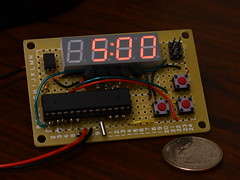We haven’t touched on surprise too much, despite it being in the title of our series. There are two reasons I included it: the difference (or delicate balance) between suspense and surprise, and the fact that surprises can be used to create tension and suspense. But surprises can also be done very, very badly.
 Most of the time, surprises shouldn’t come
Most of the time, surprises shouldn’t come out of left field from the other side of the Green Monster. As writers, it can be very gratifying to pull one over on your readers. But it’s even more gratifying if you’ve surprised them despite the foreshadowing and clues you’ve planted throughout your story. Without something the reader can go back through and identify as a clue (“Oh, man, I should have seen it coming!”), they’re likely to feel betrayed.
The clues and foreshadowing can be a great tool to build an amorphous suspense. If you keep them vague but strong, that sense of foreboding will carry through your work, pulling the readers with it—and they’ll still be stunned when you pull off the big reveal.
But I think the worst kind of surprise is when we base a surprise on something the point of view character already knows but hasn’t told the reader. To me, that’s basically lying—leading the reader to believe that we’ll all be together and we’ll tell the reader everything, but holding back the one thing that our character would know or think or realize that would make the experience complete for the reader.
I don’t mean that we have to spell out everything the character knows the exact second he or she knows it—or have the characters spill their guts to one another. But if the main character has known the truth all along—or they came into the story knowing some arcane fact that’s going to solve the case—that’s the kind of surprise that’s going to ring false to a reader unless it’s supposed to be the point of the whole story (and even then . . . ouch).
So how much foreshadowing is enough? It depends on how big the surprise is—and how central it is to the plot. (Helpful, I know.)
What do you think? How have surprises you’ve read (or written) fallen flat?
Photo by Benson Kua

 The fact is, when you’re still in love with your characters and your story, you’re more than willing to read the scenes that don’t really move the story along. One way to counteract this is to set the story aside. Yes, we’re always told to do this, and this is a big reason why. Set it aside for 6 months to a year and give yourself some distance from the work.
The fact is, when you’re still in love with your characters and your story, you’re more than willing to read the scenes that don’t really move the story along. One way to counteract this is to set the story aside. Yes, we’re always told to do this, and this is a big reason why. Set it aside for 6 months to a year and give yourself some distance from the work. Obstfeld says, “The key to a good payoff is not to give the reader what you think they want” (55). That’s not to say that the hero and heroine shouldn’t get together in a romance (they should), or that the hero can’t catch the villain in a thriller (he should). It does mean that giving the reader exactly what you promised all along and only that is not enough to reward the suspense you’ve created for that goal.
Obstfeld says, “The key to a good payoff is not to give the reader what you think they want” (55). That’s not to say that the hero and heroine shouldn’t get together in a romance (they should), or that the hero can’t catch the villain in a thriller (he should). It does mean that giving the reader exactly what you promised all along and only that is not enough to reward the suspense you’ve created for that goal. In
In  Obstfeld defines suspense creation as “a series of . . . promise-payoff scenes.” In act I, the setup, we establish the conflicts and the stakes to create suspense. Says Obstfeld:
Obstfeld defines suspense creation as “a series of . . . promise-payoff scenes.” In act I, the setup, we establish the conflicts and the stakes to create suspense. Says Obstfeld: Obviously, most of the external plot and internal conflict come from conflict—the obstacles that stand between our protagonist(s) and their goal. That will be the main source of the suspense that keeps the readers wanting to know more.
Obviously, most of the external plot and internal conflict come from conflict—the obstacles that stand between our protagonist(s) and their goal. That will be the main source of the suspense that keeps the readers wanting to know more.  So what’s the difference between the three? Surprise is fairly obvious, but suspense and tension are often used interchangeably (and I’m sure at least some of my sources won’t use the same terminology that I’m choosing). However, for the purposes of this series, I’m going to use “suspense” to mean things that propel us forward in the story—things that make us want to read the next scene. “Tension” will be the events within a scene that keep us from skipping that scene to get to see the next one 😉 .
So what’s the difference between the three? Surprise is fairly obvious, but suspense and tension are often used interchangeably (and I’m sure at least some of my sources won’t use the same terminology that I’m choosing). However, for the purposes of this series, I’m going to use “suspense” to mean things that propel us forward in the story—things that make us want to read the next scene. “Tension” will be the events within a scene that keep us from skipping that scene to get to see the next one 😉 .